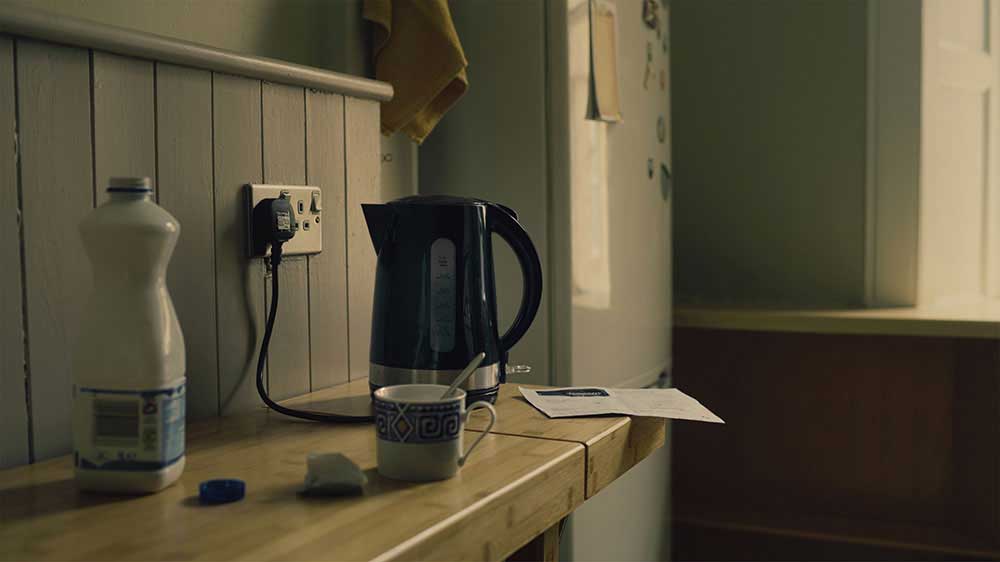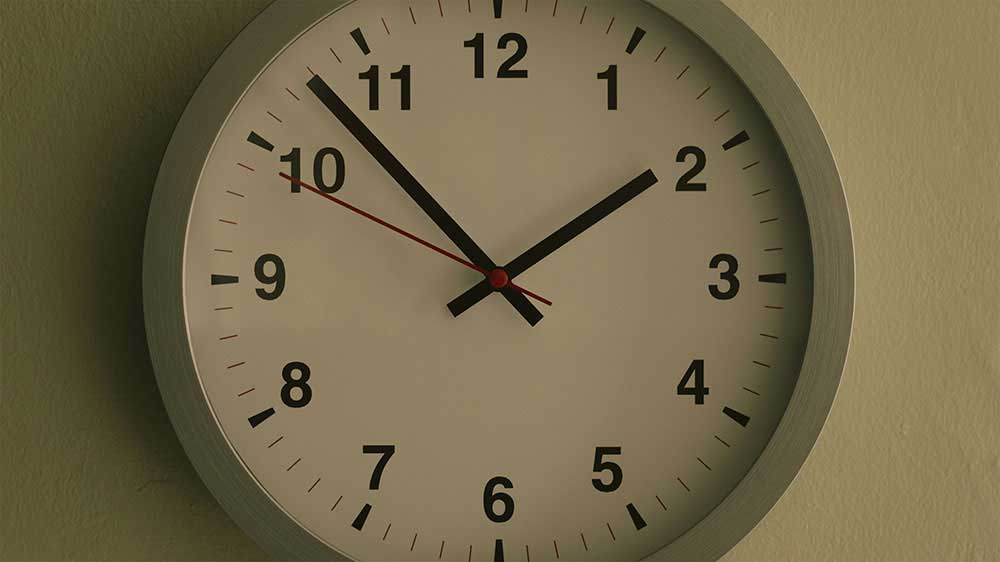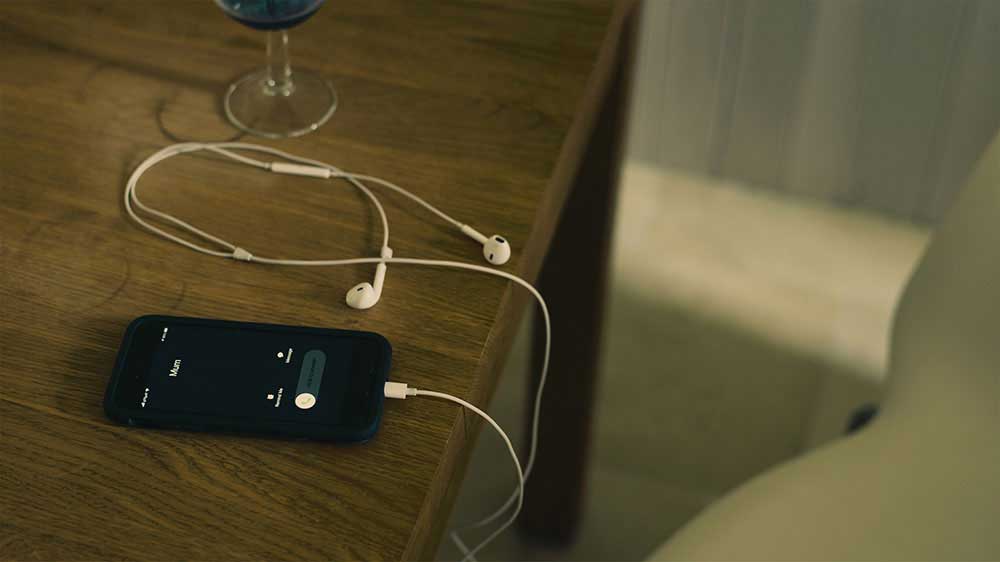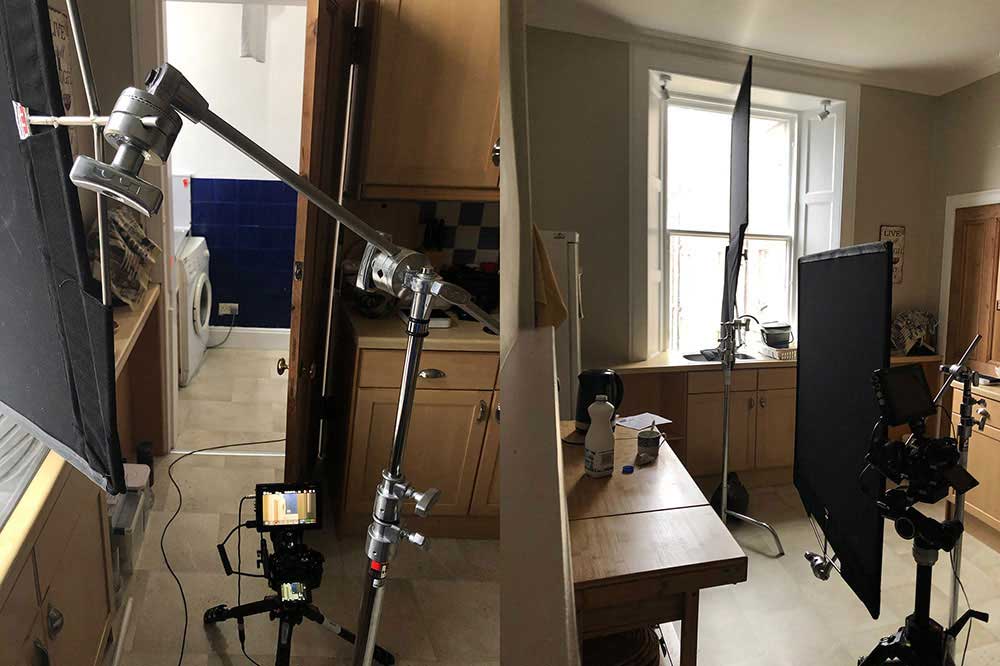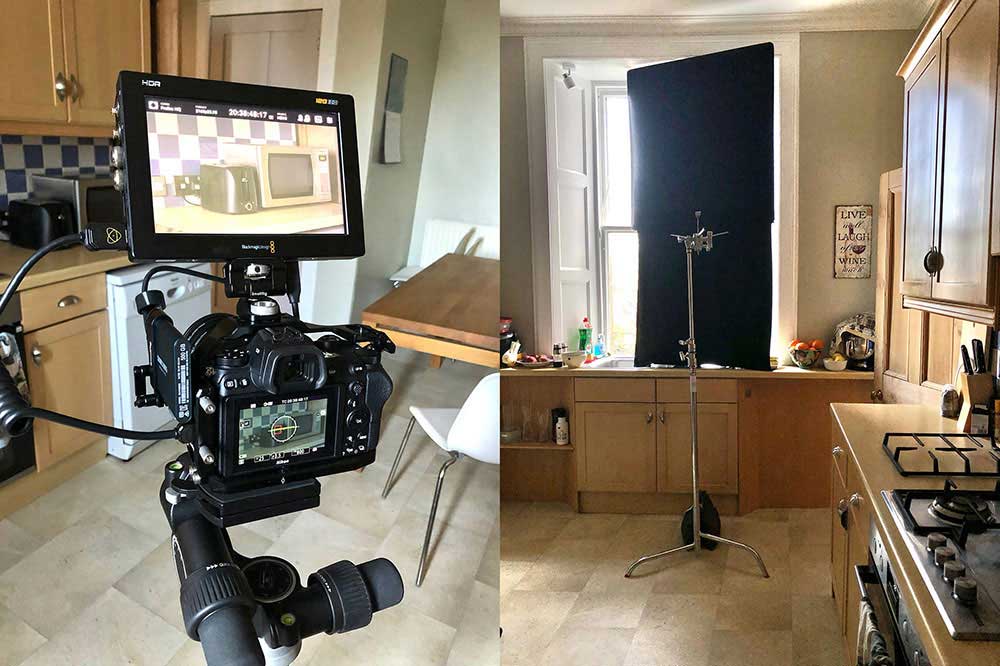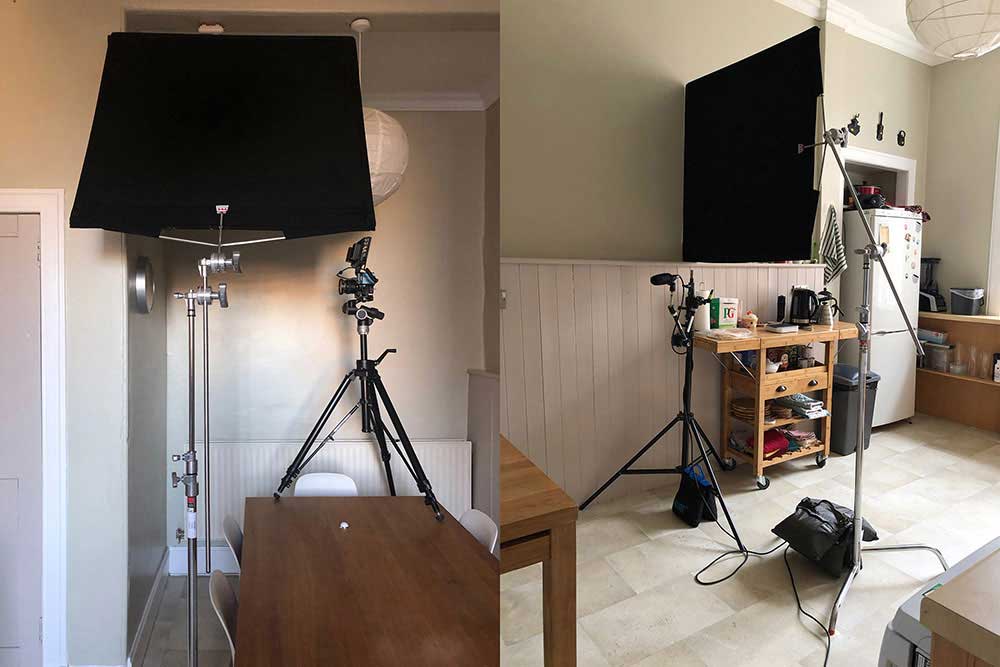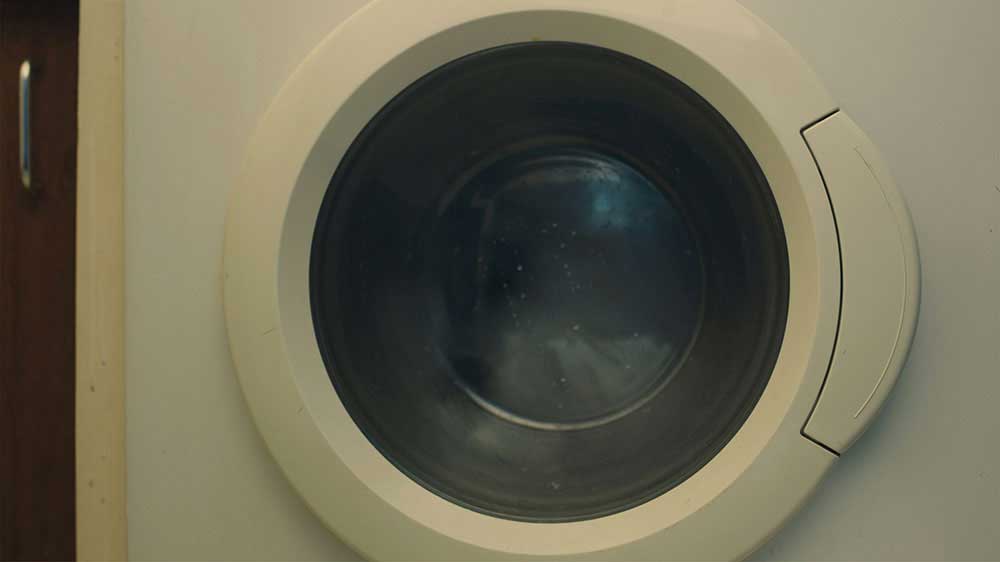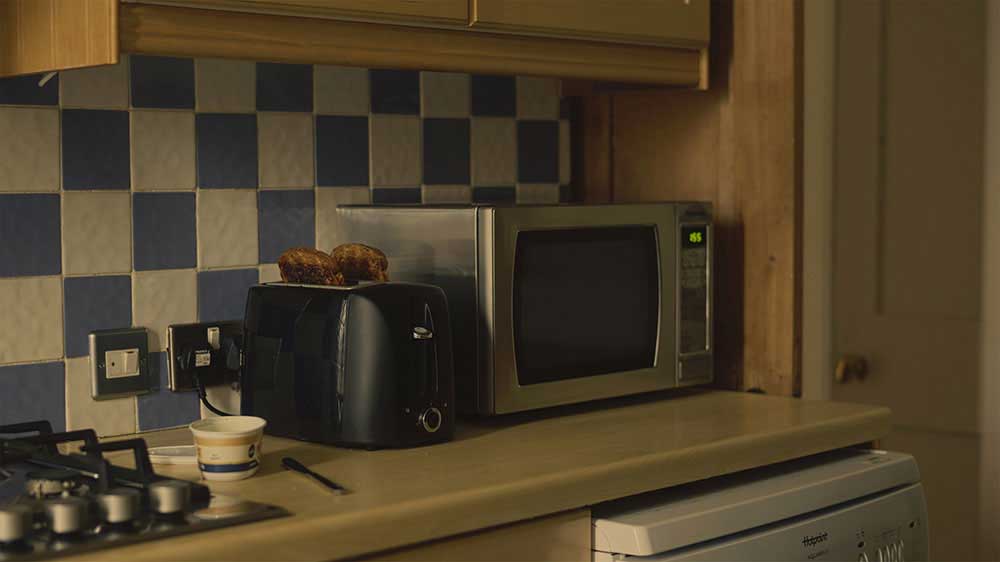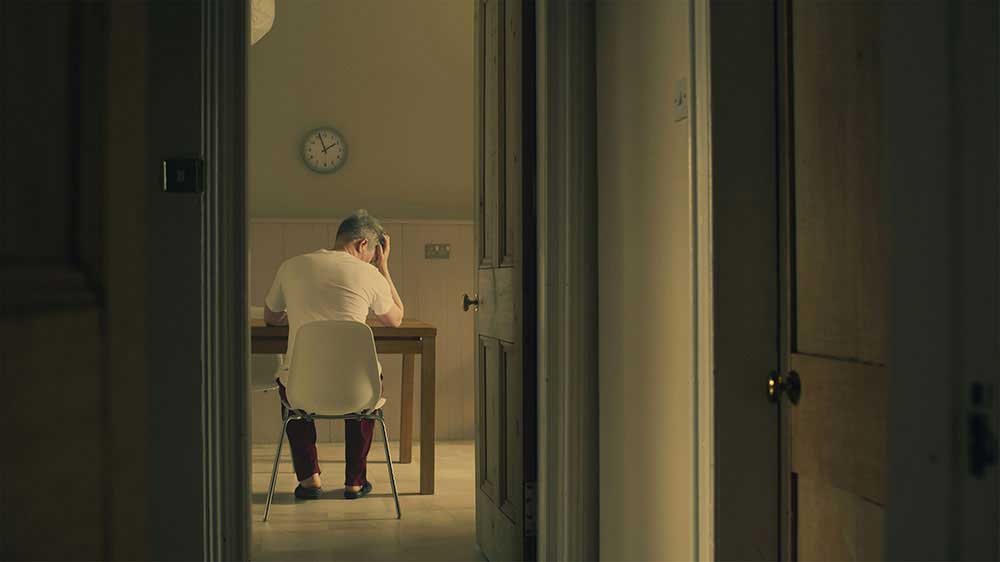The parallel between the still image and cinema has been something that I have been thinking about for quite some time, particularly as a lot of my current freelance work involves working with both stills and moving image in the same commercial sphere.
Many of my favourite photographers are also fantastic cinematographers and directors in their own right, such as the late, great Stanley Kubrick who was a gifted press photographer in his early twenties before becoming one of the greatest movie directors of all time. The art of composition, framing, lighting and exposure are very similar in both crafts, and for many (myself included), one art form is a wonderful inspiration for the other.
Lately I have found myself frequently working alongside a cinematographer or DOP (director of photography) in much of my commercial work, attempting to capture stills and moving image as a coherent visual narrative. As part of my own professional development I continue to explore how different technologies allow us to work in both mediums: for example, using continuous lighting over flash, enabling us to shoot both photography and video simultaneously in the same environment. This ongoing process of research, development and on-set experience has had a positive creative influence on my artistic practice, encouraging me to reconsider my own shooting style.
From Stills to Moving Image
In the world of photography and other lens-based media, one of the biggest motivators of change is the advancement of new technologies within the medium. The creative practice of so many renowned photographers and cinematographers has been shaped by the technology of their day, with 35mm film and later digital being prime examples of the shifts that have changed not just the way we capture images, but the creative medium as a whole.
In our current climate, one of the biggest advancements we have witnessed has been the accessibility of video on most consumer-based cameras and, possibly most importantly, on most mobile phones. With new iPhones and Samsung models now able to shoot jaw-dropping 4K and even 8K footage, the lines between the practices of photographer and cinematographer are becoming increasingly fluid for the contemporary image maker. Brands, agencies, agents and other commissioning bodies have latched onto this new technological shift, and now frequently ask that both stills and video are essential parts of most commercial briefs.
Whilst the two practices have been and continue to be specialist crafts in their own right, there are distinct parallels between the two. For us as contemporary image makers, an understanding of both technologies can open up new creative pathways in our own artistic practice and personal projects.
Animating the Sound of Silence
Returning to my ongoing personal series Apartment Two, Second Floor (previously titled The Isolation Diary), I wanted to draw upon some of these ideas and techniques to create a set of moving image sequences that could complement the still images in this project. When I first imagined this project it appeared almost as a set of cinematic film stills: a very personal story shot in the style of a short film, drawing inspiration from classic art-house and indie cinema. With this in mind, it felt like a logical and organic progression to incorporate moving image as a key element as the series developed.
The inspiration behind the videos was drawn from the many moving accounts that I’ve heard from people who battle issues of mental health or grief. Often they describe their hardest experiences as all the little moments in between: the silence they hear first thing in the morning or last thing at night, for example, when we are alone with only our own thoughts for company. Thinking of isolation and the sound of silence in my own experience of mental health, I was reminded of the practice of mindfulness or meditation when we are often asked to simply close our eyes and listen: firstly, to our own breath, then taking stock of the sounds of our immediate surroundings, and finally to listen to the ambient soundscape outside of our own four walls.
Listening to the sound of silence in my own apartment and realising just how loud and oppressive it could actually be, I was inspired to distil this cacophony into a series of creative pieces by animating a selection of everyday domestic objects around me. The video that I want to share here, titled simply 28/04/2020, is an attempt to visualise the mounting anxiety that I felt during the pandemic, experiencing feelings of worry, loneliness and depression brought on by the stress and strain of long-term unemployment and social isolation. It is a visual memory of that difficult time, attempting to give voice to complicated feelings which we are often unable to articulate when dealing with mental health issues – and show that silence is often anything but silent!
Behind the Scenes
Like all of the images in this project, this video was treated to the same pared-down aesthetic, often using only natural light in combination with white bounce and black negative fill to help sculpt the window light that was used to illuminate each shot. One of the luxuries about working on a personal project is that there is never any real deadline, and I was able to watch the sunlight pass throughout our apartment until the light was just right for the shot I had in mind. For any setup that I couldn’t achieve naturally, I used small ARRI tungsten fixtures to help replicate the light produced by light bulbs, or in one shot from candlelight, around our home in the evening and at night.
The following images are a selection of behind-the-scenes shots to I sculpted the natural light in the kitchen scene, to create the contrast and shadows that were an important part of the final piece.
Shaping Natural Light
As I’ve mentioned in my previous Dodho column, one of the key parts of this project was the effective use of bounced light and negative fill to help sculpt both the artificial and natural lighting in each scene. On previous projects I had always been using multiple sheets of black and white card, but I recently upgraded to a Matthews Studio Equipment 40” x 40” Kit including a black solid floppy, a black top-hinge floppy, an artificial silk and a white bounce floppy, coupled with matching C-stands, to bring some professional grade video lighting grip to this project.
Whilst this kit is sadly far from cheap, they are wonderful tools that allow for an extremely accurate control of light and are an industry standard both in the studio as well as out on location. They are perfect for controlling window light, for example in an interior scene, or negative fill on a model’s face in a portrait setting; the possibilities are endless! It goes without saying that good gear is far from essential and will never transform anyone into a talented artist, but it can really help us to work quickly and effectively when used correctly.
As a quick side note for any gear nerds out there, the new 40” x 40” set is a wonderful new addition by Matthews, slightly smaller than the Hollywood standard of 48” x 48”, meaning that I can still get all this equipment into the back of my old trusty 1.1 litre Honda Jazz!
Camera Considerations
The other big change for me when working with video was the physical camera that I selected to capture the footage. For almost all of my stills work I use a Nikon D850 DSLR, and whilst this is fantastic for RAW capture with a 45.7 megapixel sensor, it only puts out 8-bit video which sadly isn’t high enough quality for the creative colour grading work that I wanted to perform on these sequences.
For anyone not technically minded, the bit count of an image or video clip is the total amount of digital colour data that the camera sensor can capture, so a higher number here means that more valuable colour data can be recorded in the final file, often leading to much smoother gradients and transitions between lighter and darker tones. For most basic applications this isn’t an issue, but for creative post-production where a strong colour grade and other creative refinements are used, the limitations can quickly become apparent. These often appear as blocks of colour, or banding as it is professionally known, particularly across a solid colour gradient moving from dark to light or vice versa.
To overcome the limitation of my regular stills camera I decided to use Nikon’s new Z6 mirrorless body, allowing me to utilise my existing Nikon prime lenses but harness the camera’s 12-bit video output over an HDMI connection when used in conjunction with an external monitor such Atomos’ Ninja V, or in my case a Black Magic Video Assist. This setup allowed for much more colour data to be recorded and gave me far more flexibility in post-production, particularly for the creative colour grading that I had in mind. To help further solidify a cinematic aesthetic in the sequence, I used either a 1/4 or a 1/8 Tiffen Black Pro Mist filter over the camera lens. These types of lens filters are often used with cinema cameras and lenses, providing a gentle bloom in the highlights to give a subtle yet distinctive cinematic feel to the footage.
For anyone who is interested, the video was shot on ProRes HQ format using Nikon’s N-Log gamma profile, at 23.98 frames per second in 4K. This specific frame rate was chosen as it gives the motion in the footage that classic, smooth cinematic feel and does not appear overly crisp, the hallmark of most classic Hollywood movies shot at this speed.
Moving Forward
I hope this video as well as the behind-the-scenes gives you some inspiration for your own experimentation, and lastly please never be afraid to experiment. For most of the clips in this particular video sequence as well as the series as a whole, I re-shot many of them multiple times before I was ever happy with how the final piece came together. We never learn by getting things right first time, and what we discover during the process is often far more valuable than the images we create!
If this piece does resonate on a personal level then please do feel free to share it far and wide, and if you have any thoughts, suggestions, comments or questions please send me a message and I’ll do my best to help in any way I can!
Gavin Smart
Gavin Smart is an award-winning freelance photographer. He has a rich and diverse creative background which began with his rigorous musical training, studying the tuba at London’s prestigious Guildhall School of Music. While he no longer plays music professionally, this period of his life gave Gavin the colourful life experiences which continue to shape his photographic process. His cinematically-inspired images feature theatrical light, emotive colour and constructed photography, drawing a strong influence from painting, film and literature. His work marries the production of advertising for some of the UK’s top arts institutions, theatres and design agencies alongside carefully considered personal projects. Using imaginative storytelling to produce creative and thought-provoking imagery, his photography has since become a vital means of personal expression and an aid in making sense of an ever-evolving world.



